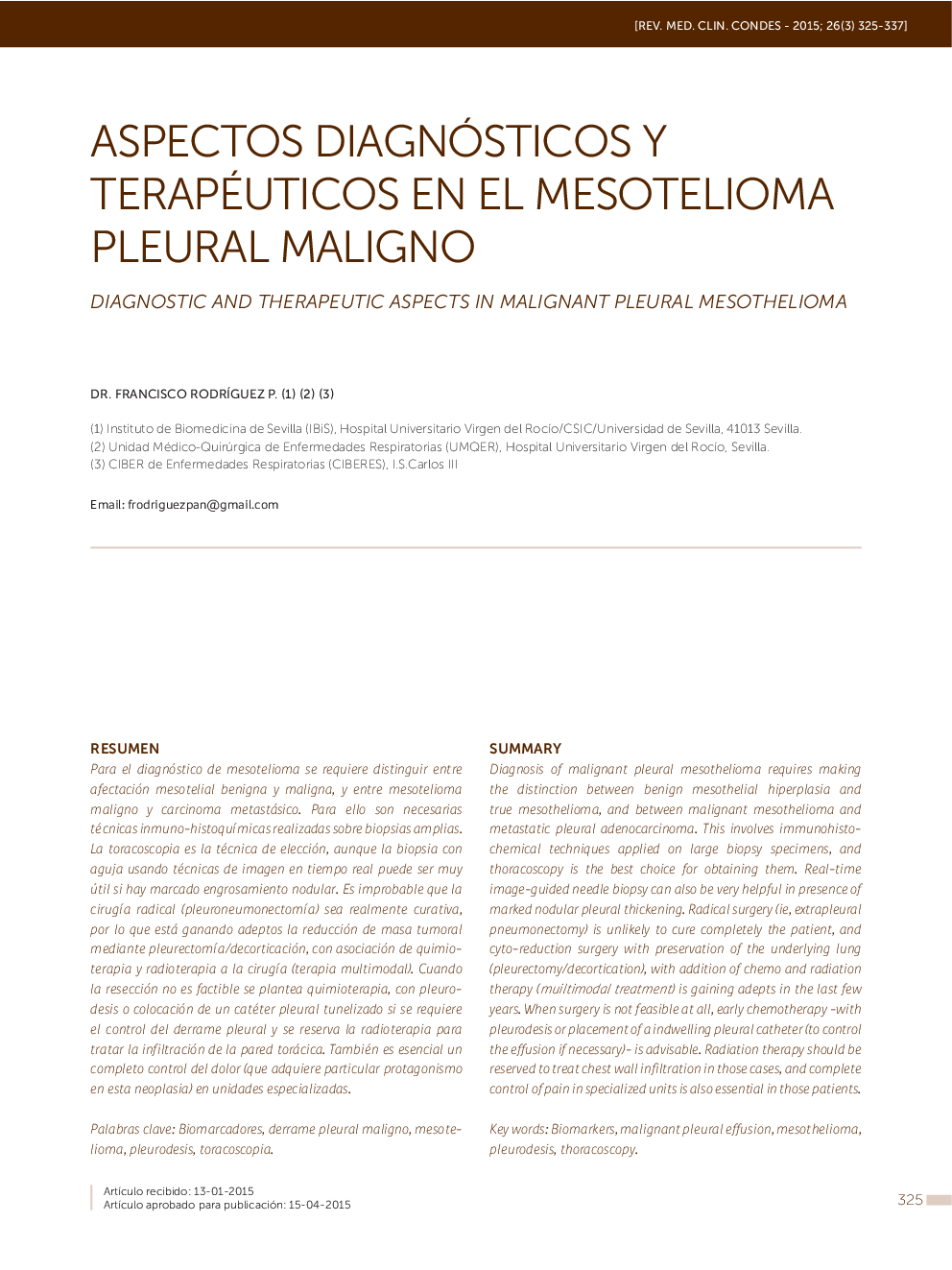| Article ID | Journal | Published Year | Pages | File Type |
|---|---|---|---|---|
| 3830241 | Revista Médica Clínica Las Condes | 2015 | 13 Pages |
ResumenPara el diagnóstico de mesotelioma se requiere distinguir entre afectación mesotelial benigna y maligna, y entre mesotelioma maligno y carcinoma metastásico. Para ello son necesarias técnicas inmuno-histoquímicas realizadas sobre biopsias amplias. La toracoscopia es la técnica de elección, aunque la biopsia con aguja usando técnicas de imagen en tiempo real puede ser muy útil si hay marcado engrosamiento nodular. Es improbable que la cirugía radical (pleuroneumonectomía) sea realmente curativa, por lo que está ganando adeptos la reducción de masa tumoral mediante pleurectomía/decorticación, con asociación de quimioterapia y radioterapia a la cirugía (terapia multimodal). Cuando la resección no es factible se plantea quimioterapia, con pleurodesis o colocación de un catéter pleural tunelizado si se requiere el control del derrame pleural y se reserva la radioterapia para tratar la infiltración de la pared torácica. También es esencial un completo control del dolor (que adquiere particular protagonismo en esta neoplasia) en unidades especializadas.
SummaryDiagnosis of malignant pleural mesothelioma requires making the distinction between benign mesothelial hiperplasia and true mesothelioma, and between malignant mesothelioma and metastatic pleural adenocarcinoma. This involves immunohisto-chemical techniques applied on large biopsy specimens, and thoracoscopy is the best choice for obtaining them. Real-time image-guided needle biopsy can also be very helpful in presence of marked nodular pleural thickening. Radical surgery (ie, extrapleural pneumonectomy) is unlikely to cure completely the patient, and cyto-reduction surgery with preservation of the underlying lung (pleurectomy/decortication), with addition of chemo and radiation therapy (muiltimodal treatment) is gaining adepts in the last few years. When surgery is not feasible at all, early chemotherapy -with pleurodesis or placement of a indwelling pleural catheter (to control the effusion if necessary)- is advisable. Radiation therapy should be reserved to treat chest wall infiltration in those cases, and complete control of pain in specialized units is also essential in those patients.
